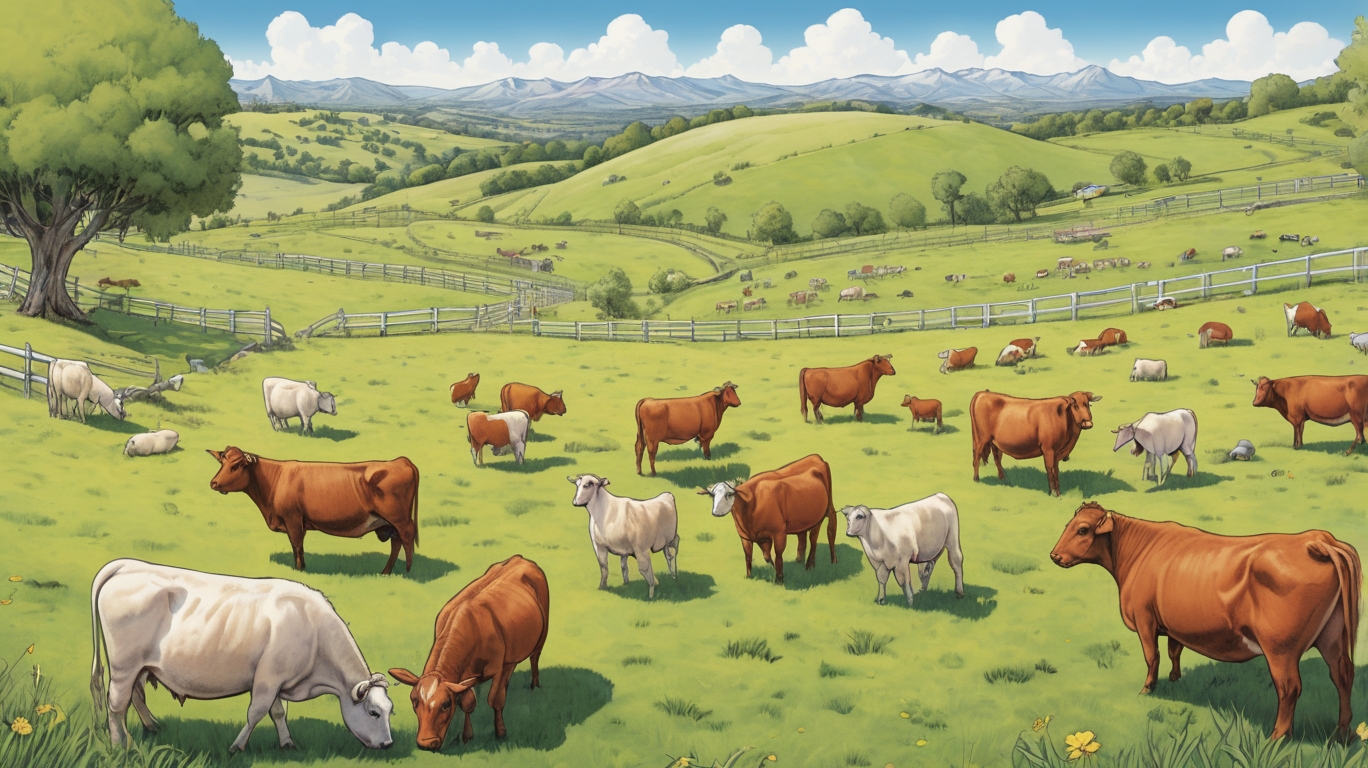Pasture Management for Healthier Livestock: A Gentle Approach
A well-managed pasture is more than just a field of grass—it’s the foundation of healthy, thriving livestock. When animals have access to nutritious forage, clean water, and a stress-free environment, their overall well-being improves naturally. Thoughtful pasture management not only benefits the animals but also supports sustainable farming practices, ensuring the land remains productive for years to come.

The Benefits of Healthy Pastures
Pastures provide livestock with essential nutrients, exercise, and mental stimulation. Grazing on diverse, high-quality forage reduces the need for supplemental feed and promotes better digestion. Additionally, well-maintained pastures help prevent soil erosion, improve water retention, and encourage biodiversity.
Key Principles of Effective Pasture Management
1. Rotational Grazing
Allowing livestock to graze continuously in one area can lead to overgrazing, soil compaction, and weed invasion. Instead, practice rotational grazing by dividing pastures into smaller paddocks and rotating animals between them. This gives grasses time to recover, ensures even forage utilization, and minimizes parasite exposure.
2. Soil Health Matters
Healthy soil grows nutritious forage. Regular soil testing helps determine pH levels and nutrient deficiencies, allowing for targeted fertilization. Organic matter, such as compost or manure, can improve soil structure and fertility naturally. Avoid overuse of chemical inputs, as they can disrupt the delicate balance of soil microbes.
3. Diverse Forage Selection
A mix of grasses, legumes, and herbs provides a balanced diet for livestock. Legumes like clover and alfalfa add nitrogen to the soil while offering high-protein forage. Deep-rooted plants improve soil aeration and drought resistance. Diversity also reduces the risk of pasture degradation from pests or disease.
4. Manage Weeds and Pests Thoughtfully
Weeds compete with desirable forage plants, but harsh herbicides aren’t always the answer. Strategic mowing, controlled grazing, and manual removal can keep weeds in check. Introducing beneficial insects or birds can help manage pests naturally without harming livestock or the ecosystem.
5. Provide Clean Water and Shade
Livestock need constant access to fresh, clean water to stay hydrated and aid digestion. Portable water troughs can be moved with rotational grazing systems. Shade trees or shelters protect animals from extreme heat, reducing stress and improving overall health.
6. Monitor and Adjust
Pasture management is not a one-time task—it requires observation and flexibility. Regularly assess forage growth, soil conditions, and animal health. Adjust grazing schedules, reseed bare patches, and rest pastures as needed to maintain balance.
A Calm Approach to Livestock Well-Being
By nurturing the land, we nurture our animals. Pasture management is a gentle, ongoing process that rewards patience and mindfulness. When we prioritize the health of the soil and forage, our livestock thrive naturally, with fewer health issues and higher productivity.
In the end, a well-tended pasture is a gift—to the animals that graze it, the farmers who steward it, and the earth that sustains us all.
Would you like personalized advice for your pasture? Consider consulting a local agricultural extension office or a sustainable farming expert to tailor these principles to your land. Happy grazing! 🌱🐄